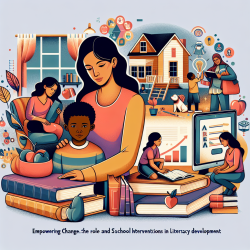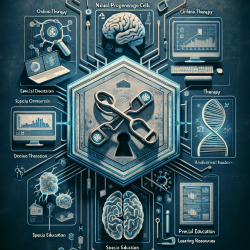Introduction
The Covid-19 pandemic has transformed educational landscapes globally, challenging traditional teaching methods and amplifying the role of home environments in learning. A recent study titled "Home and school interventions aided at-risk students’ literacy during Covid-19: a longitudinal analysis" provides insightful data on how both home and school interventions have impacted literacy development in at-risk students during this unprecedented time.
Key Findings
The study observed that home learning activities and reading enjoyment significantly predicted improvements in word and pseudoword reading skills among at-risk children. This highlights the critical role parents play in facilitating literacy development, especially when traditional classroom interactions are limited.
Furthermore, differentiation of instruction by teachers was found to significantly enhance pseudoword reading skills. This suggests that personalized teaching strategies can effectively support struggling readers, even in an online learning environment.
Implications for Practitioners
Practitioners can leverage these findings to enhance their teaching strategies and support at-risk students more effectively:
- Enhance Home Literacy Environment: Encourage parents to engage in home learning activities and foster a love for reading. Providing access to diverse and age-appropriate reading materials can significantly impact children's reading skills.
- Promote Reading Enjoyment: Facilitate activities that make reading a pleasurable experience for children. This can include shared reading sessions, interactive storytelling, and discussions about books.
- Differentiated Instruction: Tailor teaching methods to meet the individual needs of students. This can involve adjusting the pace of instruction, using varied teaching materials, and providing additional support where needed.
Encouraging Further Research
While the study provides valuable insights, it also opens avenues for further research. Practitioners are encouraged to explore the following areas:
- Investigate the long-term effects of enhanced home literacy environments on reading development.
- Examine the impact of technology and digital resources on literacy skills.
- Explore strategies to effectively implement differentiated instruction in diverse classroom settings.
Conclusion
As we navigate the post-pandemic educational landscape, the integration of home and school interventions remains crucial. By fostering a collaborative approach between parents and educators, we can create supportive environments that empower at-risk students to thrive in their literacy development.
To read the original research paper, please follow this link: Home and school interventions aided at-risk students’ literacy during Covid-19: a longitudinal analysis.










